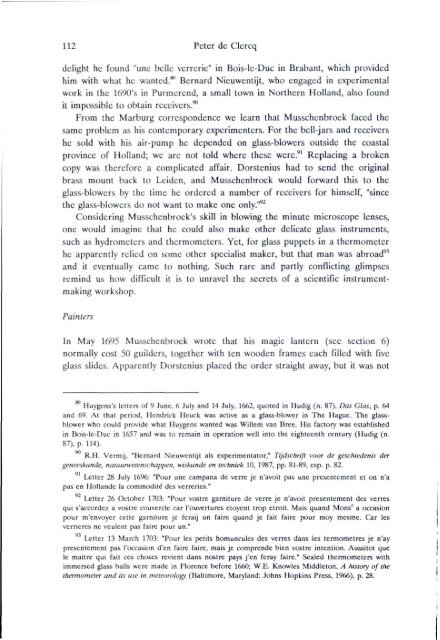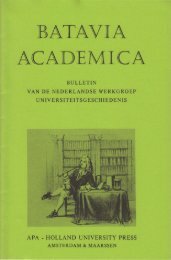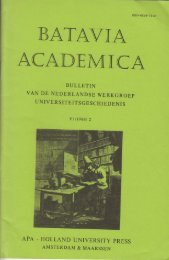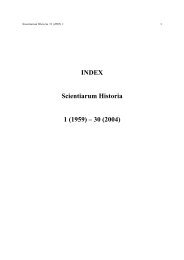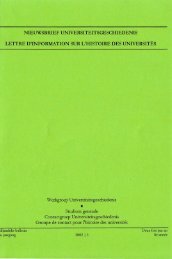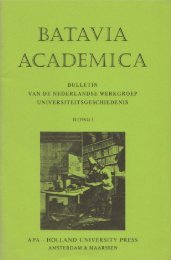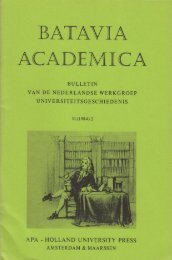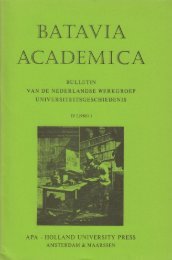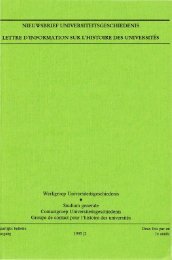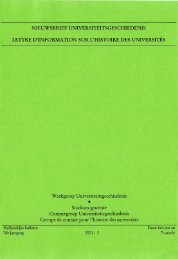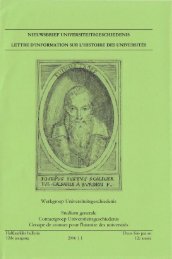EXPORTING SCIENTIFIC INSTRUMENTS AROUND 1700 - Gewina
EXPORTING SCIENTIFIC INSTRUMENTS AROUND 1700 - Gewina
EXPORTING SCIENTIFIC INSTRUMENTS AROUND 1700 - Gewina
You also want an ePaper? Increase the reach of your titles
YUMPU automatically turns print PDFs into web optimized ePapers that Google loves.
112 Peter de Clercq<br />
delight he found "une belle verrerie" in Bois-lc-Duc in Brabant, which provided<br />
him with what he wanted.** Bernard Nieuwentijt, who engaged in experimental<br />
work in the 1690's in Purmerend, a small town in Northern Holland, also found<br />
it impossible to obtain receivers.'"<br />
From the Marburg correspondence we learn that Musschenbroek faced the<br />
same problem as his contemporary experimenters. For the bell-jars and receivers<br />
he sold with his air-pump he depended on glass-blowers outside the coastal<br />
province of Holland; we are not told where these were." Replacing a broken<br />
copy was therefore a complicated affair. Dorstenius had to send the original<br />
brass mount back to Leiden, and Musschenbroek would forward this to the<br />
glass-blowers by the time he ordered a number of receivers for himself, "since<br />
the glass-blowers do not want to make one only."'^<br />
Considering Musschenbroek's skill in blowing the minute microscope lenses,<br />
one would imagine that he could also make other delicate glass instruments,<br />
such as hydrometers and thermometers. Yet, for glass puppets in a thermometer<br />
he apparently relied on some other specialist maker, but that man was abroad'^<br />
and it eventually came to nothing. Such rare and partly confiicting glimpses<br />
remind us how difficult it is to unravel the secrets of a scientific instrumentmaking<br />
workshop.<br />
Painters<br />
In May 1695 Musschenbroek wrote that his magic lantern (see section 6)<br />
normally cost 50 guilders, together with ten wooden frames each filled with five<br />
glass slides. Apparently Dorstenius placed the order straight away, but it was not<br />
Huygens's letters of 9 June, 6 July and 14 July, 1662, quoted in Hudig (n. 87), Das Glas, p. 64<br />
and 69. At that period. Hendrick Heuck was active as a glass-blower in The Hague. The glassblower<br />
who could provide what Huygcns wanted was Willem van Bree. His factory was established<br />
in Bois-lc-Duc in 1657 and was to remain in operation well into the eighteenth century (Hudig (n.<br />
87), p, 114).<br />
R.H. Vermij. "Bernard Nieuwentijt als experimentator," Tijdschrift voor de gescluedenis der<br />
genecskunde, natuunvetenschappen, wiskunde en techniek 10, 1987, pp. 81-89, esp. p. 82.<br />
91<br />
Letter 28 July 1696: "Pour une campana de verre je n'avoit pas une presentement et on n'a<br />
pas en Hollande la commodite des vcrreries."<br />
Ixtter 26 October 1703: "Pour vostre garniture de verre je n'avoit presentement des verres<br />
qui s'accordez a vostre couvercle car I'ouvertures etoyent trop etroit. Mais quand Mons"^ a occasion<br />
pour m'envoyer cette garniture je feraij un faire quand je fait faire pour moy mesme. Car les<br />
verrieres ne veulent pas faire pour un,"<br />
l.etlcr 13 March 1703: "Pour les petits homuncules des verres dans les termometres je n'ay<br />
presentement pas I'occasion d'en faire faire, mais je comprende bien vostre intention. Aussitot que<br />
le maiire qui fail ccs choses revient dans nostre pays j'en feray faire." Sealed thermometers with<br />
immersed glass balls were made in Florence before 1660; W.E. Knowles Middleton, A history of the<br />
thermometer and ils u.sc in meteorology (Baltimore, Maryland: Johns Hopkins Press, 1966), p. 28.


